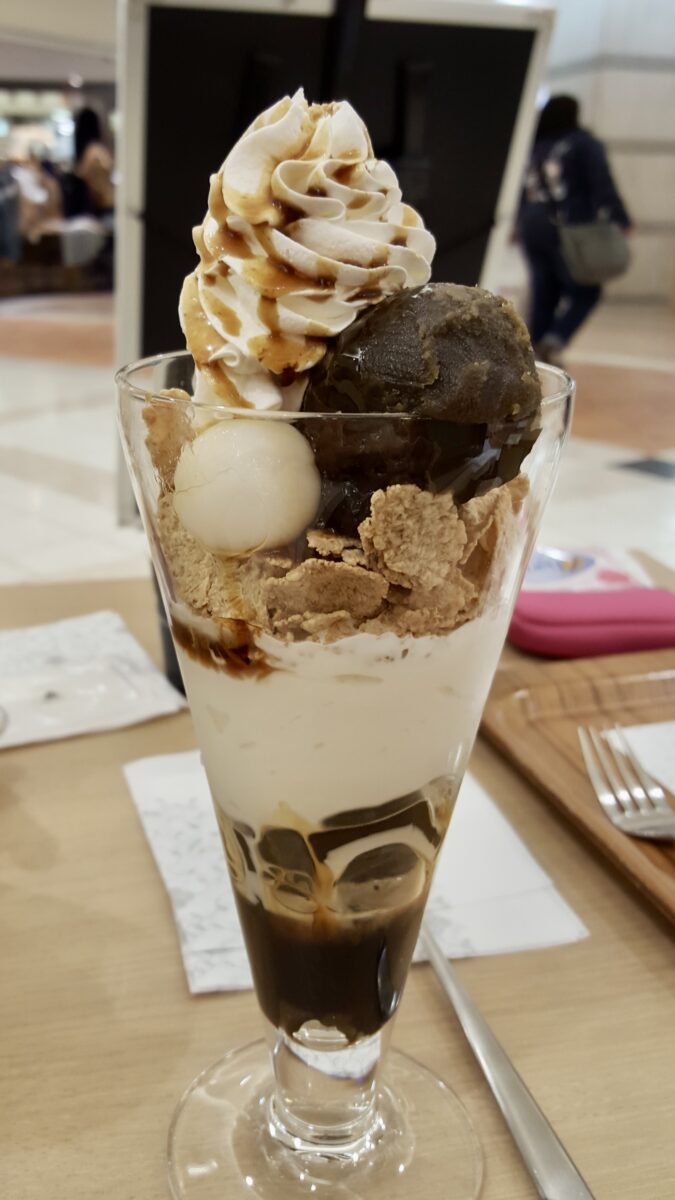
(The Origins of the Filipino Halo-Halo)
The first time I tasted a Japanese halo-halo was in Osaka in 2015. While we waited for our companions, my mother and I sat in an ice cream parlor and ordered a parfait with red beans, jello, and rice balls. As we enjoyed our merienda, the red beans and jello in the parfait reminded me of our Philippine halo-halo and I thought that the Japanese ice cream parlor copied our dessert.
I would later learn that it was actually us who copied from the Japanese.
Pre-War Halo-Halo
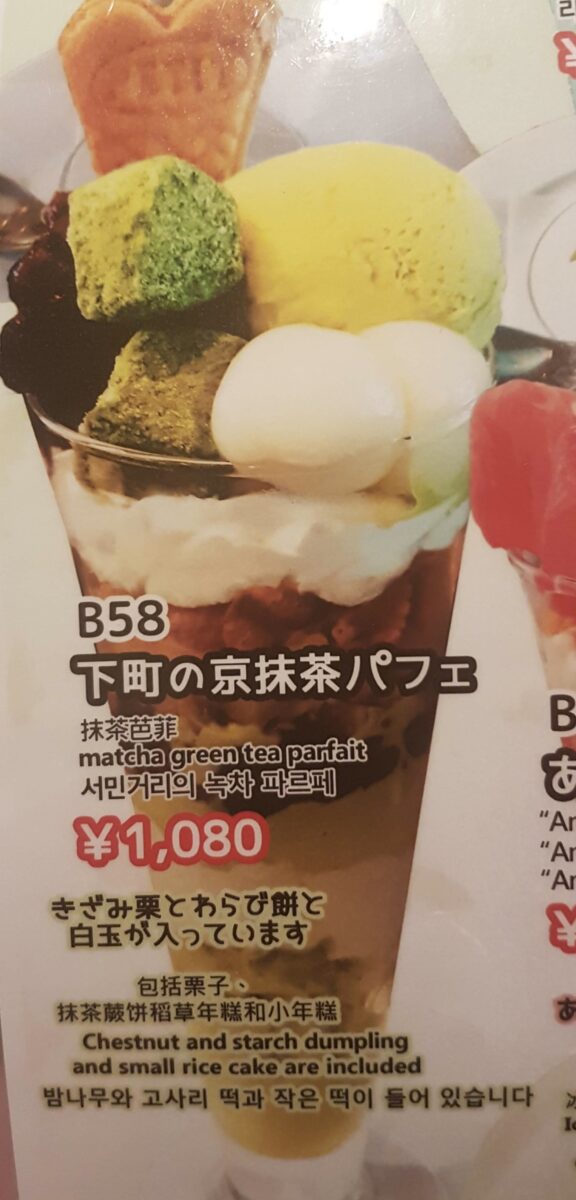
It is difficult to imagine that the halo-halo originated from anywhere else other than the Philippines because mixing stuff together is very Filipino. But the roots of this shaved ice treat can be traced to 7th century Japan. And then Japanese immigrants introduced the dessert to Manila before World War II. According to a 92-year-old friend who remembers pre-war Manila, his family patronized a Japanese owned shop selling halo-halo in Paco. The shop closed during World War II and never reopened.
My second Japanese Halo-Halo
On my second trip to Osaka, I tried to look for the parfait with rice balls again. I got lucky on my last day of that trip when I saw an ice cream parlor a block away from my hotel.
The Search in Fukuoka
In my visit to Japan last week, I stayed in Fukuoka and googled ice cream with red beans and rice balls. The top answer and only perfect match was a restaurant in a mall beside the hotel I was staying in. Although I was pleased it was available nearby, I tried to see if there was any other place that served the treat.
I asked assistance from the hotel front desk personnel. They looked at the picture of the Japanese halo-halo and said they did not know where else I could get the dish. I asked them if the dish was popular in the city. They sad no. One of the staff scrutinized the picture and said she hadn’t tasted the dish yet, but that it looked delicious!


Shaved Ice and Red Beans
After eating a bowl of ramen, my sisters and I headed to the mall for the halo-halo.
At first, I found the matcha flavored shaved ice too sweet but after munching on the red beans, I found it well-balanced. I can imagine that this particular dish is closely related to the original halo-halo served in Manila. The pre-war halo-halo was made of shaved ice, milk, and red beans and fruits preserved in syrup.
Kakigōri
As I researched for this blog, I found that Kakigōri is the Japanese word for shaved ice dessert. And a search for Kakigōri yielded a wide selection in Japan. There are so many shops serving different varieties of Kakigōri in Fukuoka! Somewhere along the way, the hotel staff and I misunderstood each other.
If I ever get to visit Japan again, I will be on the hunt for another Kakigōri.
Which is Better?
So which do I prefer? The Japanese or the Filipino halo-halo? I love ube, macapuno, leche flan, and all the stuff in our halo-halo. But matcha and rice balls are a refreshing alternative too.
—- ⬤ —-
End Notes


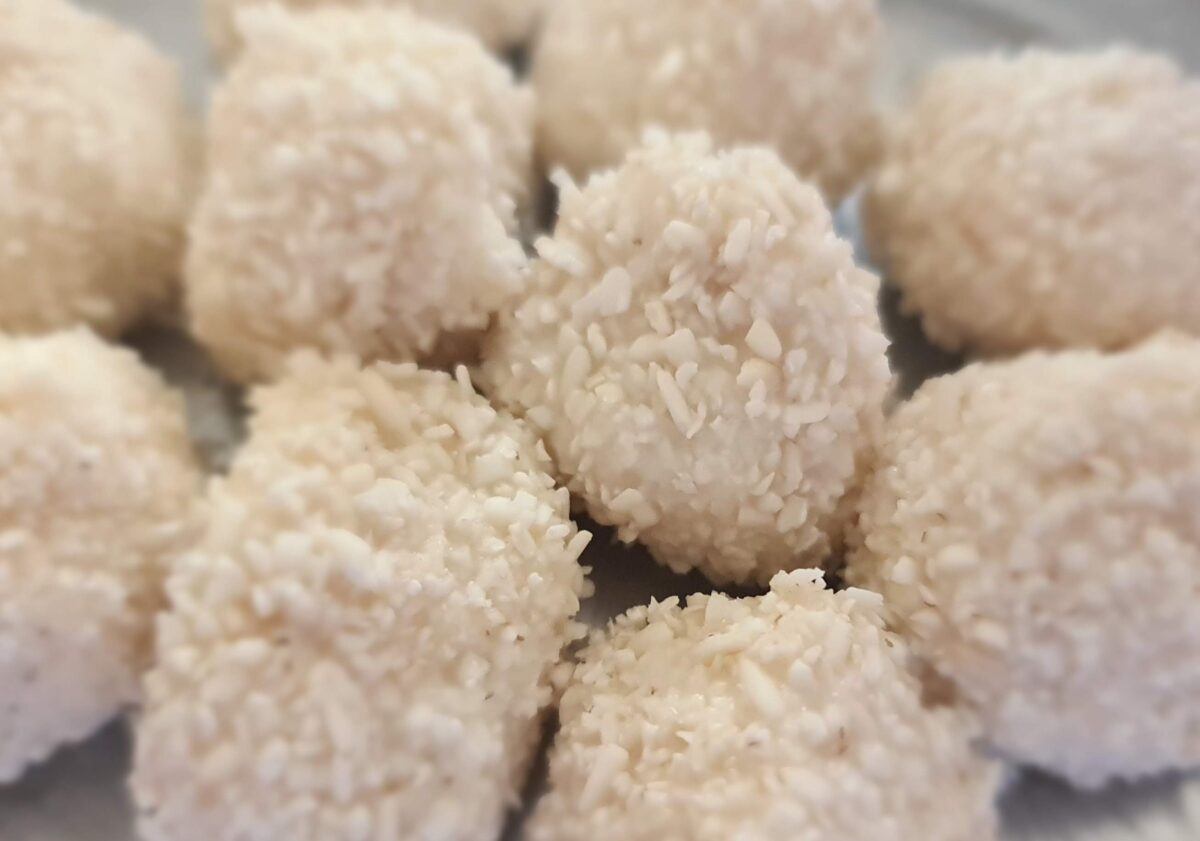
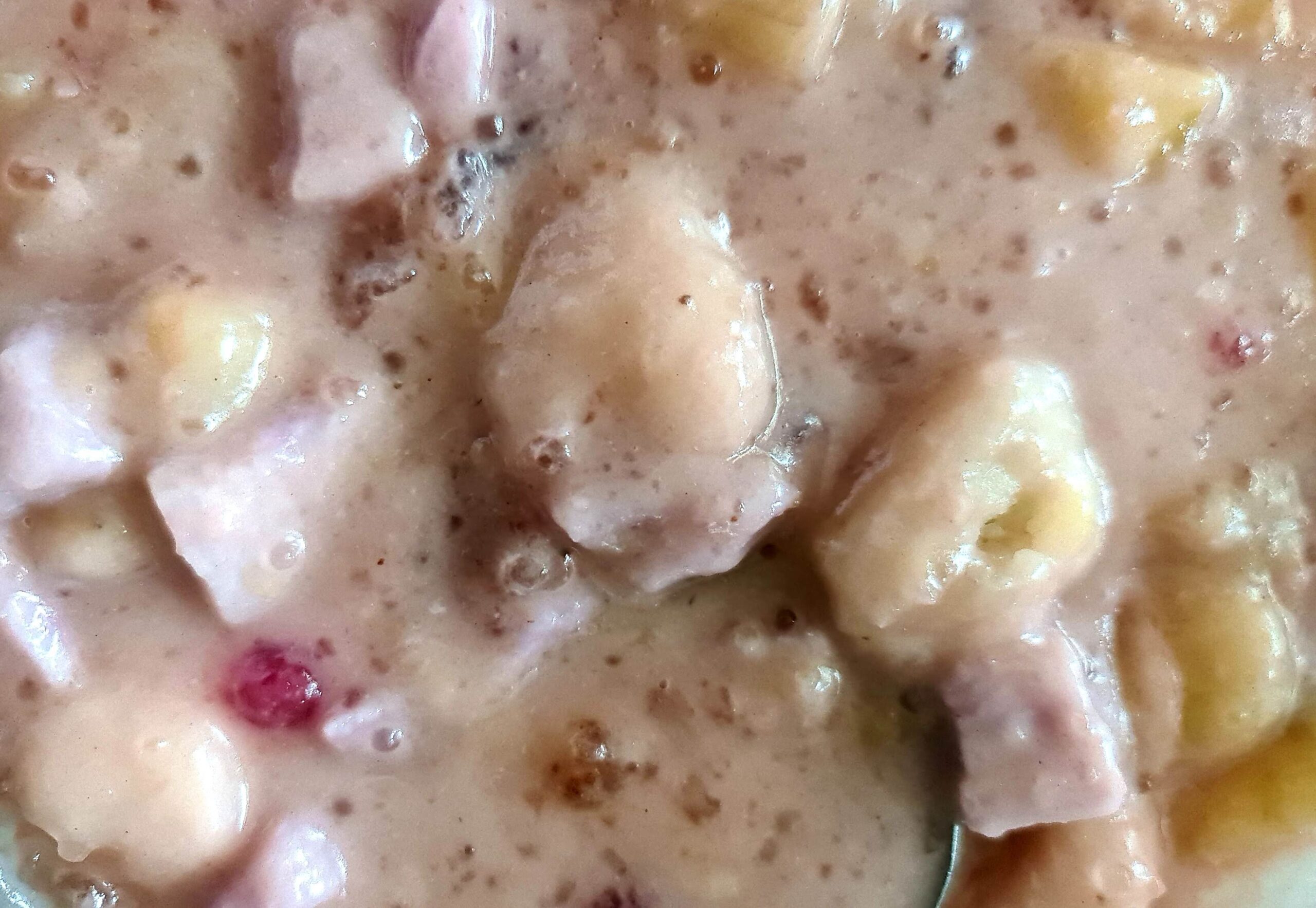
The other Philippine halo-halo: warm Binignit.
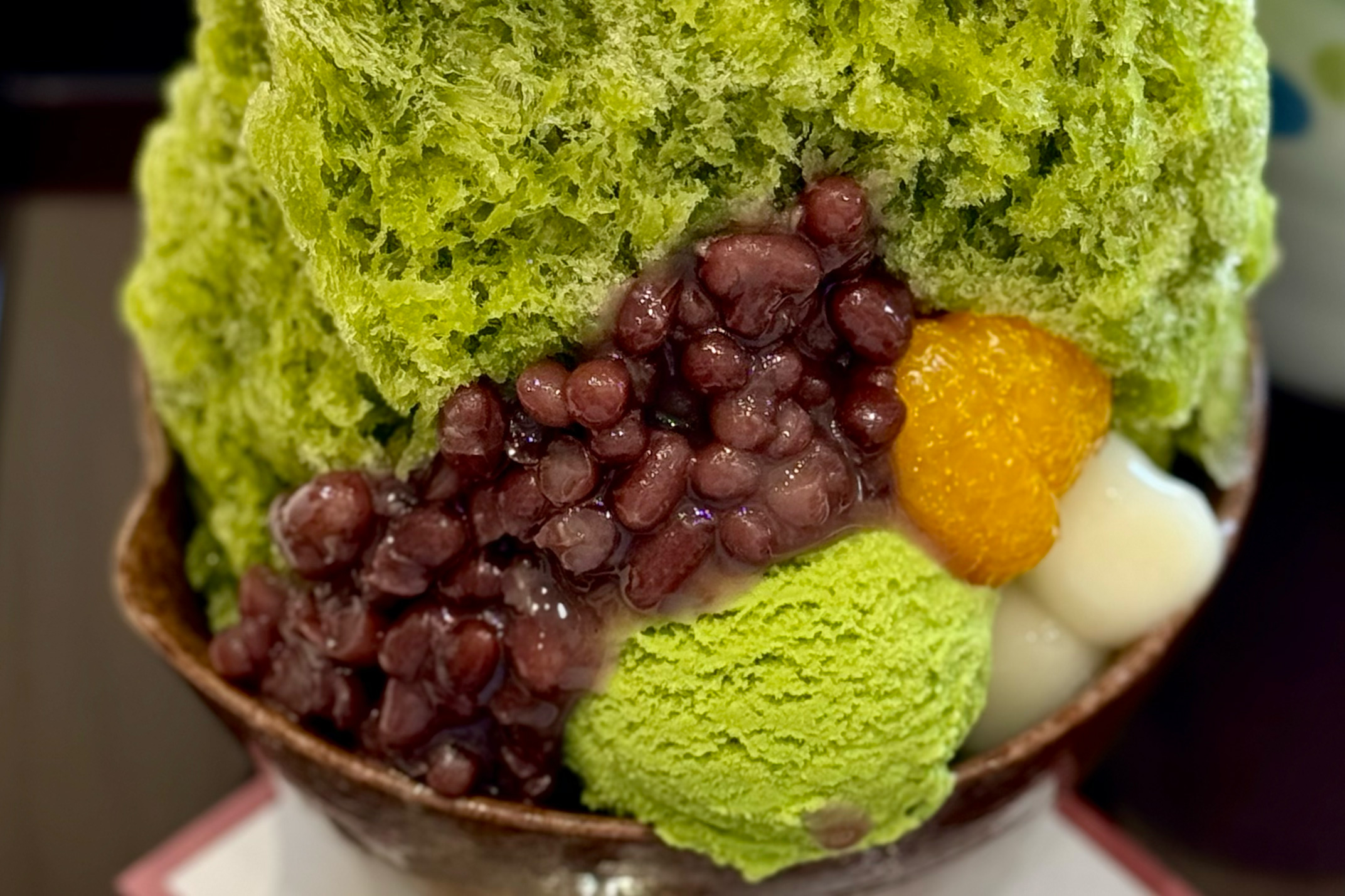
Leave a Reply